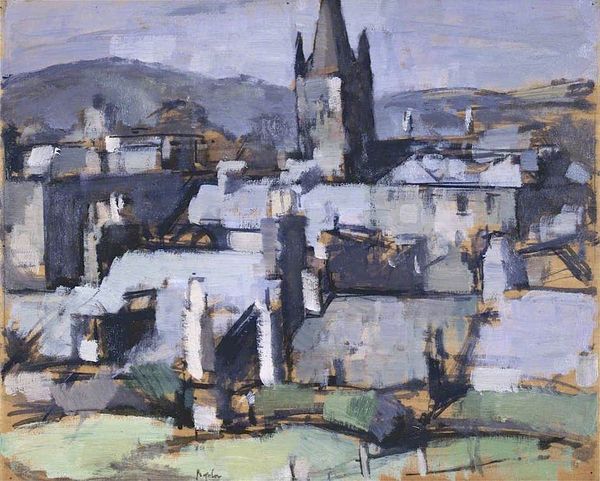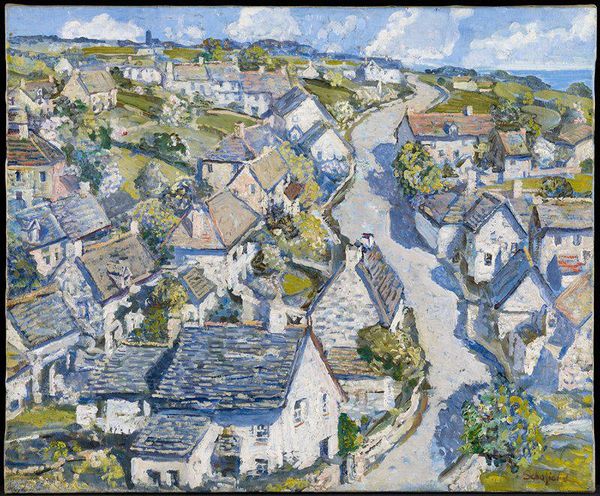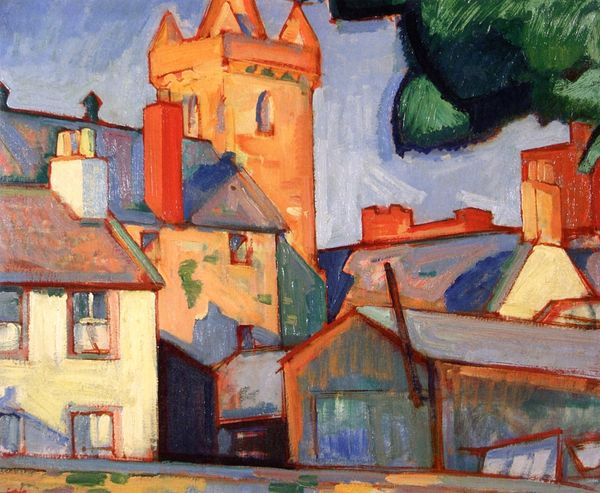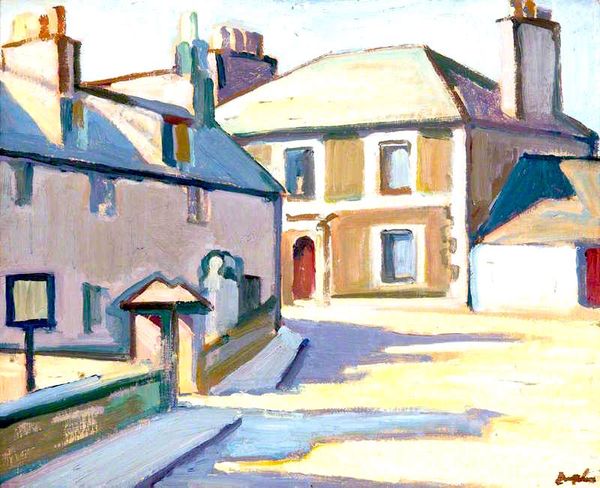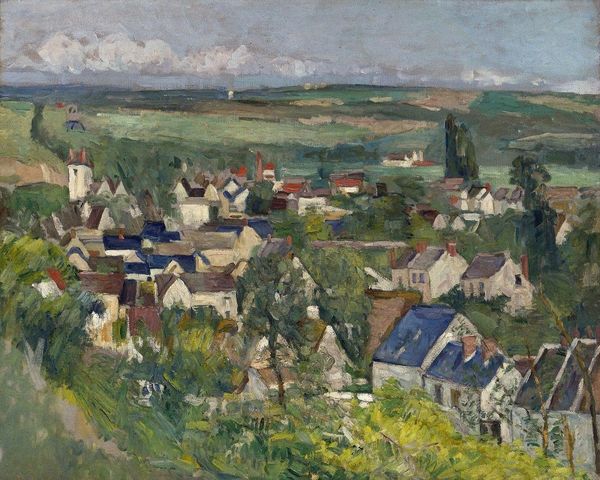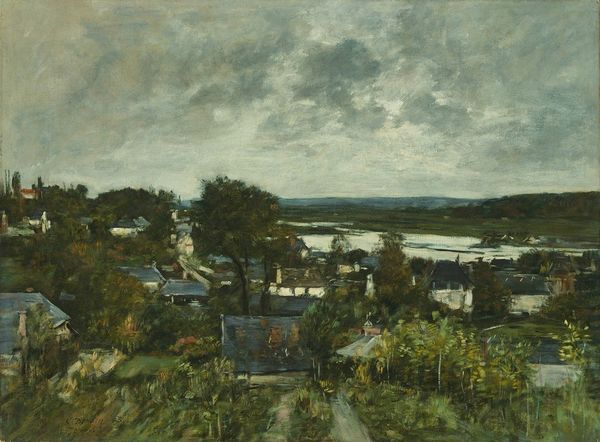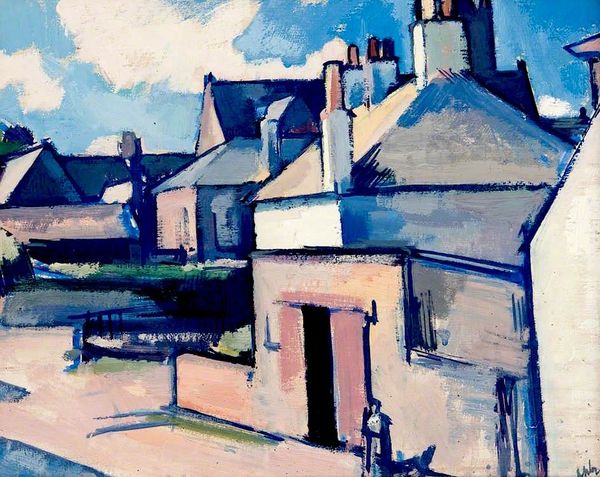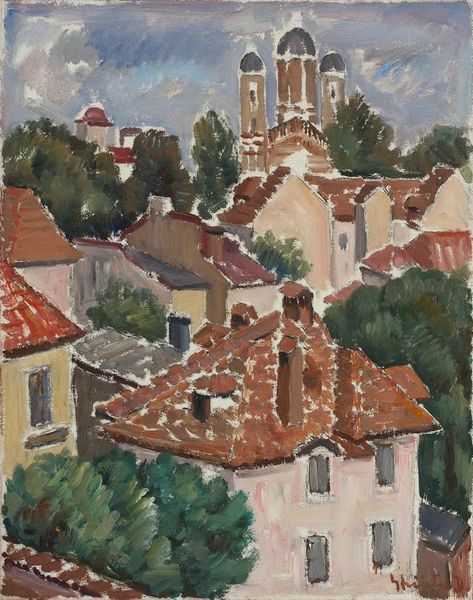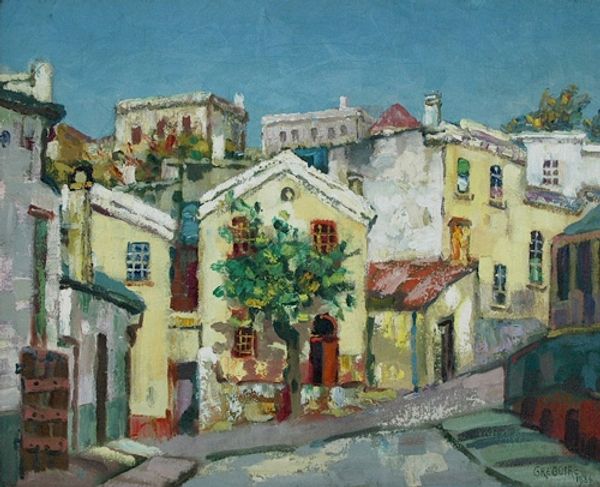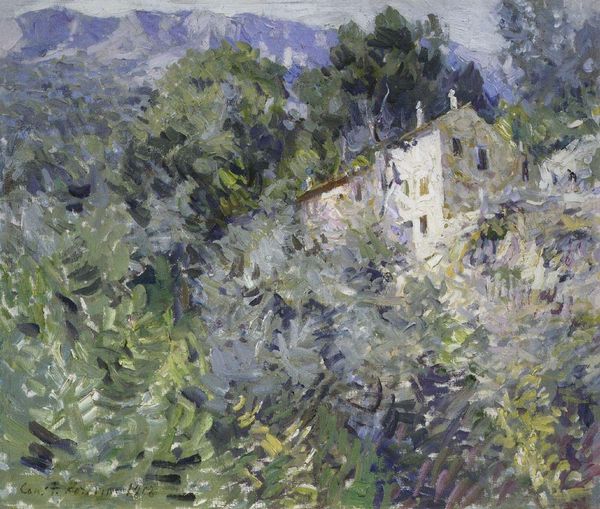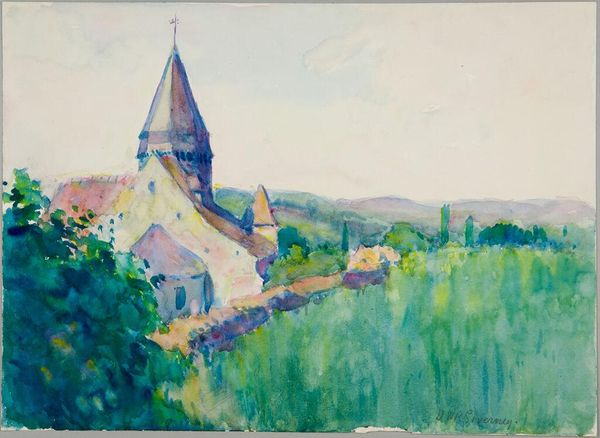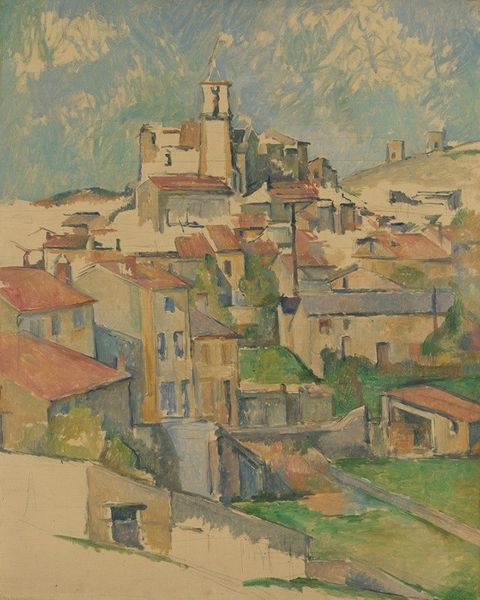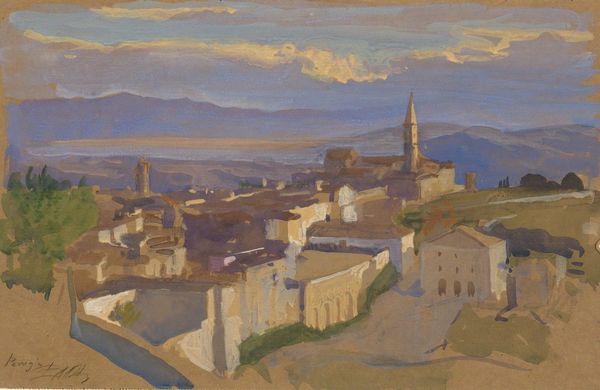
Copyright: Public domain
Samuel Peploe made this oil painting, Kirkcudbright, sometime in the early 20th century. It depicts a town in Scotland where he often painted. Peploe was one of the Scottish Colourists, a group of artists influenced by French Impressionism and Post-Impressionism. What’s interesting about Kirkcudbright is how Peploe interprets the town. Notice the church spire that dominates the composition. The church would have been a prominent institution in Scottish society, but Peploe seems more interested in capturing the play of light and color on the rooftops and surrounding landscape. The loose brushstrokes and vibrant colors give the scene a sense of spontaneity, and the overall effect is more about capturing a feeling or impression of the town. We can better understand Peploe's work by looking at the broader context of early 20th-century art and culture. Artists were pushing the boundaries of traditional representation, experimenting with new forms of expression and challenging conventional notions of beauty. By studying Peploe's biography, the history of Scottish art, and the influence of French modernism, we can gain a deeper appreciation for the social and institutional context in which Kirkcudbright was created.
Comments
No comments
Be the first to comment and join the conversation on the ultimate creative platform.
